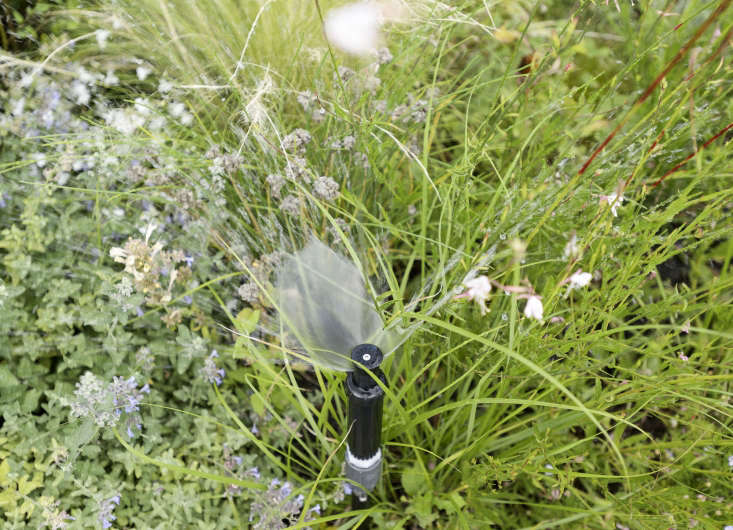You’d think watering plants would be an easy task, a total no-brainer, effective however you do it, but unfortunately that is not the case. Certain ways of watering can actually harm and weaken your plants, waste your time and money, and (super-critical right now) waste a dwindling resource. Luckily. though, if you know the right way to water, you’ll be setting your garden up for success and helping the earth at the same time.
Keep reading to learn how to properly water your outdoor plants—and save water:

1. Give your plants the right amount of water.
First things first, understand your plants’ watering needs. Some prefer consistent moisture; others are drought-tolerant. (Tip: Grouping plants with similar drinking habits together in a garden makes for more efficient watering.) And, when it comes time to water, there’s a proper way to do it: not too long (or you could create a boggy situation where fungus and rot can happen) and not too quickly (or you could encourage shallow roots that are vulnerable to drought conditions). Ideally, you should water deeply and at longer intervals in between so that the water reaches the longer roots. Soaking the soil to a depth of five to six inches encourages plants to grow deeper roots, which in the long run will make for a healthier garden. Do know that sandy soil dries out quicker, and clay soil holds on to moisture longer so you will have to adjust your watering to your conditions.
2. Make watering part of your morning routine.
Be choosy about your watering schedule and give your plants a long drink early in the morning when sunlight is less strong, the ground is cooler, and the foliage has time to dry before dusk. Also morning is when it tends to be less windy. Aim for between 5 a.m. and 10 a.m. Oh, and avoid watering in the evening when the damp foliage can attract insects, fungus, and disease.
3. Water at the correct height.

When you water from too high, a big portion of the moisture is lost either to evaporation or to foliage blocking the water from reaching the soil. The best method is direct watering, in which you aim the water at the base of a plant (avoiding wetting the foliage, which invites fungus.) Pro Tip: Mulch around your plants to prevent runoff and keep soil wet longer.
4. Leverage an irrigation system with a timer.
Please consider using a drip irrigation system with a smart timer. When you use emitters, plants get water directed right to their roots, and a timer helps you stay on track with your watering schedule so you don’t forget or overdo the watering. In addition, some smart systems will adjust watering based on the weather; others measure moisture in the soil and turn on irrigation only when it gets dry (both features make sprinklers that turn on while it’s raining a thing of the past). Pro Tip: Irrigation systems are not perfect and leaks and breaks happen all the time. Check your system regularly.
5. Use a hose correctly when watering plants.
An open hose is notorious for wasting water. Make sure you attach a water wand or some sort of attachment with a variable spray nozzle so that you can control and stop the flow as you move the hose around. Just remember: A nozzle that casts a wide spray wets the foliage and doesn’t always reach the ground, making this wasteful and not efficient.
6. Put potted plants on a different watering schedule.

Pots need water more regularly because they hold on to heat longer, and confined soil dries out quicker than garden soil. This means you might need to water once a day or so during hot, dry spells, unless you have succulents which may need only a drink once every two weeks. To determine if you need to water, stick your finger in the soil, and if it feels dry all the way to your second knuckle then it’s time. Pro Tip: Water the entire pot, not just a spot in the corner or just the center, as this makes for a weak root system.
For more on watering plants, see:
- Your First Garden: The Right Watering Method for Your Garden
- Ask the Expert: 7 Ways to Save Water in the Garden, from a Graywater Crusader
- Fall Gardening: Can You Stop Watering Now? (And 5 Other Burning Questions)












Have a Question or Comment About This Post?
Join the conversation (0)